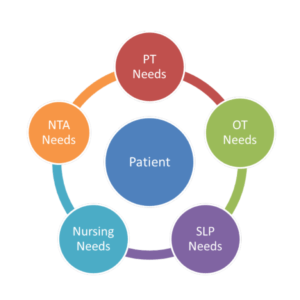What your team needs to know about the COT OMRA
At the end of July, the Centers for Medicare & Medicaid Services (CMS) published the “Medicare Program; Prospective Payment System and Consolidated Billing for Skilled Nursing Facilities for FY 2012” final rule. The majority of changes in the original proposed rule for updates to the SNF PPS system for FY 2012 were adopted by this final rule, including those related to the Change of Therapy other Medicare required assessment (COT OMRA). This newly implemented requirement will become effective October 1, 2011, and will require education, systems review and oversight to ensure accuracy in completing the indicated MDS assessment changes.
CMS worked with industry investigative agencies to research the accuracy of MDS reported data and correlate the findings with payments made under the Medicare Part A program. Per CMS officials, research reveals “some cases where therapy services recorded on a given PPS assessment did not provide an accurate account of the therapy provided to a given resident outside the observation window used for the most recent assessment. We believe that when service levels change, whether inside or outside the observation period, such changes should be based on medical evidence.” Based on the above noted outcome, CMS proposed and has now instituted the COT OMRA.
In regards to the COT OMRA, the final rule states:
“Effective for services provided on or after October 1, 2011, SNFs would be required to complete a Change of Therapy OMRA, for patients classified into a RUG-IV therapy group, whenever the intensity of therapy (that is, the total reimbursable therapy minutes, or RTM delivered) changes to such a degree that it would no longer reflect the RUG-IV classification and payment assigned for a given SNF resident based on that resident’s most recent assessment used for Medicare payment.”
The SNF Medicare team must begin to prepare for this new initiative as soon as possible. Therapy staff and MDS coordinators will be required to have frequent if not daily communication systems to track and monitor the daily minute delivery patterns for each Medicare Part A patient. The day following the assessment reference date for a scheduled or unscheduled MDS assessment will begin the first day of a rolling 7-day look-back period. Each 7-day period following an assessment will require careful overview of provided therapy minutes to identify any dips or spikes in the level of care.
Comparison of seven days worth of minutes to the set RUG-IV classification minimum requirements for each rehab category will reveal whether a COT OMRA is necessary. Of note is that if the care delivered is reduced by a day or a therapy discipline drops out during the 7-day rolling look-back, this too may spur the need for a COT OMRA. A benefit to this new requirement is the ability for the facility to capture higher levels of rehab intensity with higher payment rates or change payment from a nursing RUG classification to a rehab classification with the COT OMRA.
There is a high likelihood that this requirement will not significantly impact the current operations in select SNFs. Many departments have protocols in place to carefully monitor the daily provision of treatment minutes to all patients in therapy. It is highly recommended that facilities confirm the status of minute mapping within the rehab department to prevent loss of revenue and increase revenue when indicated with the COT OMRA.
Elisa Bovee, MS OTR/L, is the Vice President of Operations for Harmony Healthcare International. She has worked in the LTC industry for more than 19 years practicing and providing consulting services related to therapy and Medicare regulations and guidelines. Bovee began working for Harmony Healthcare as a regional consultant before becoming Director of Education and Training for Harmony University, an approved provider of educational hours and credits for NAB, MARN, AOTA and ASHA. Bovee is available for private audiences to discuss facility challenges between seminar dates.
I Advance Senior Care is the industry-leading source for practical, in-depth, business-building, and resident care information for owners, executives, administrators, and directors of nursing at assisted living communities, skilled nursing facilities, post-acute facilities, and continuing care retirement communities. The I Advance Senior Care editorial team and industry experts provide market analysis, strategic direction, policy commentary, clinical best-practices, business management, and technology breakthroughs.
I Advance Senior Care is part of the Institute for the Advancement of Senior Care and published by Plain-English Health Care.
Related Articles
Topics: Articles , MDS/RAI , Medicare/Medicaid











